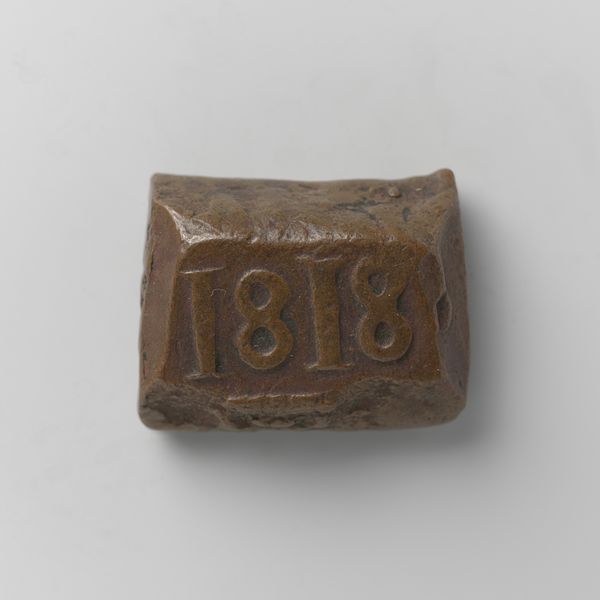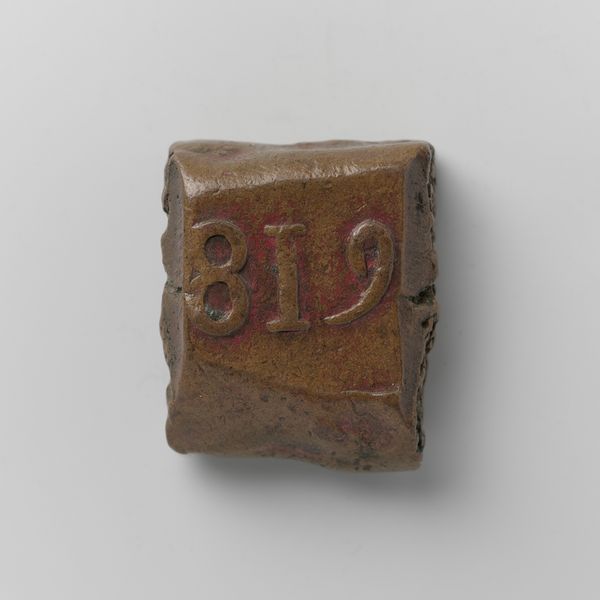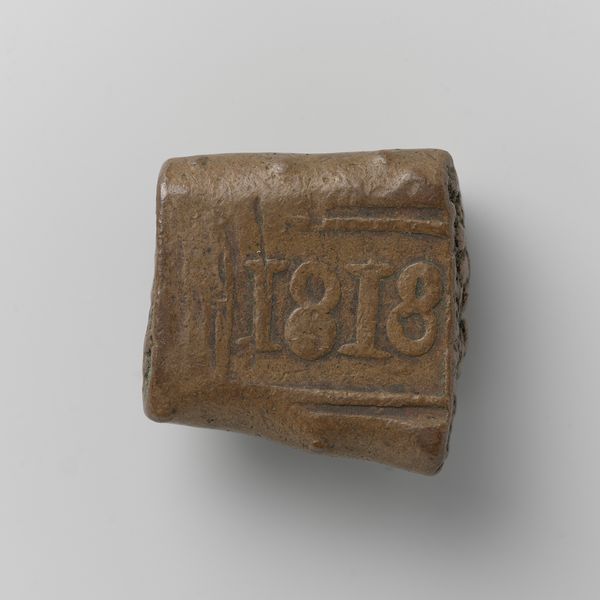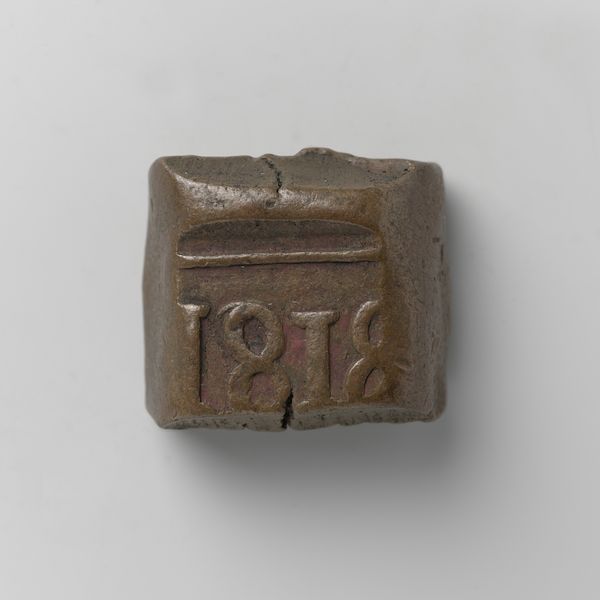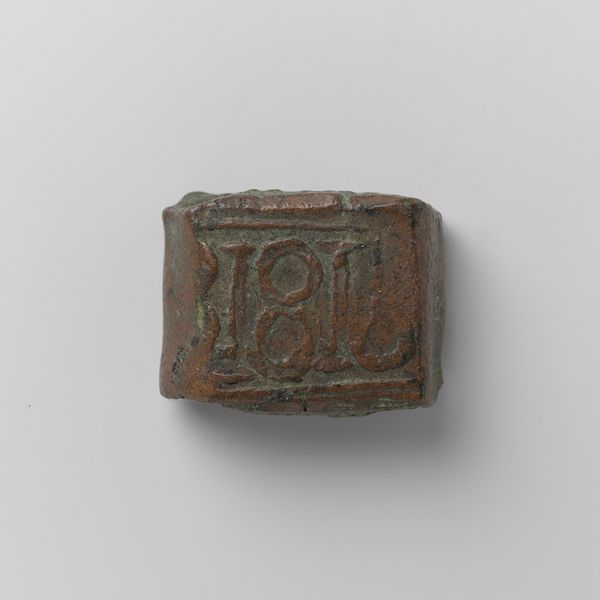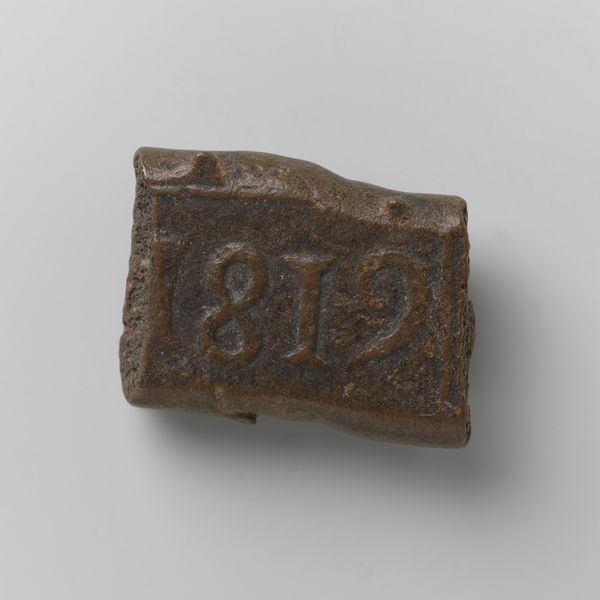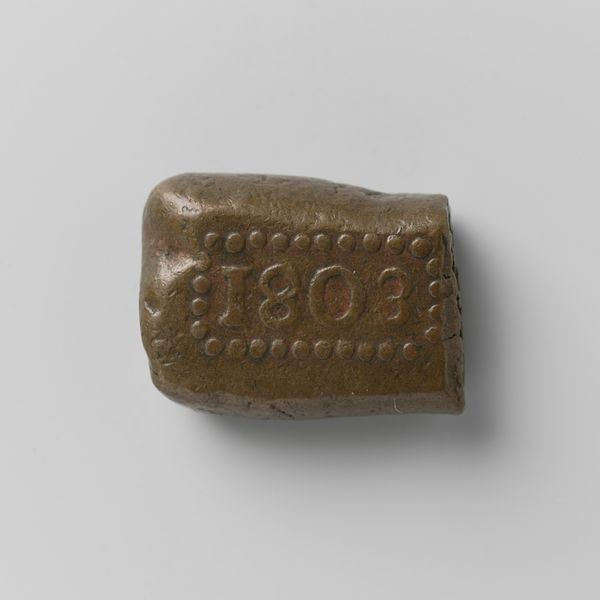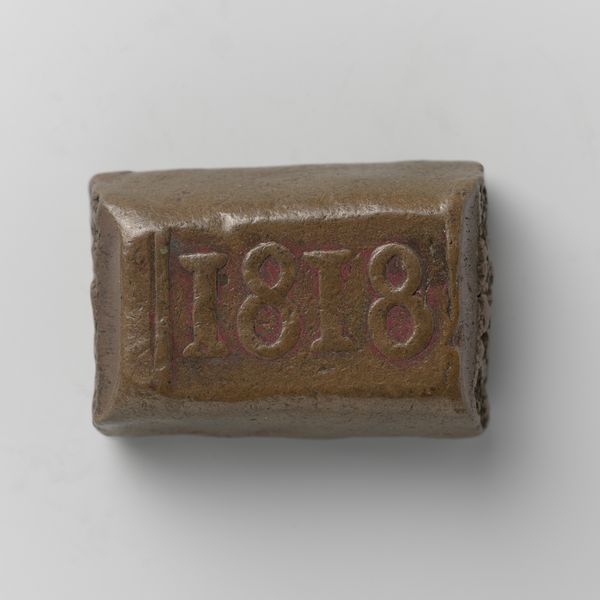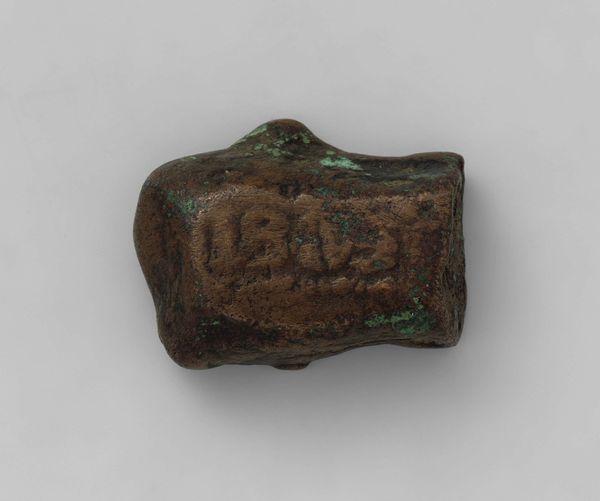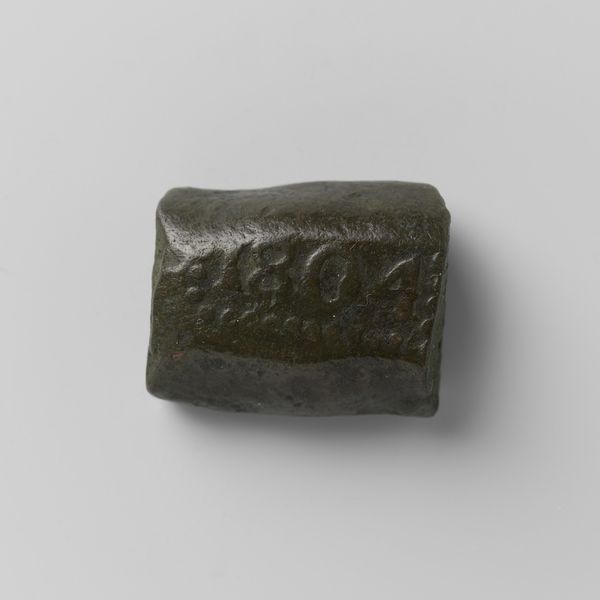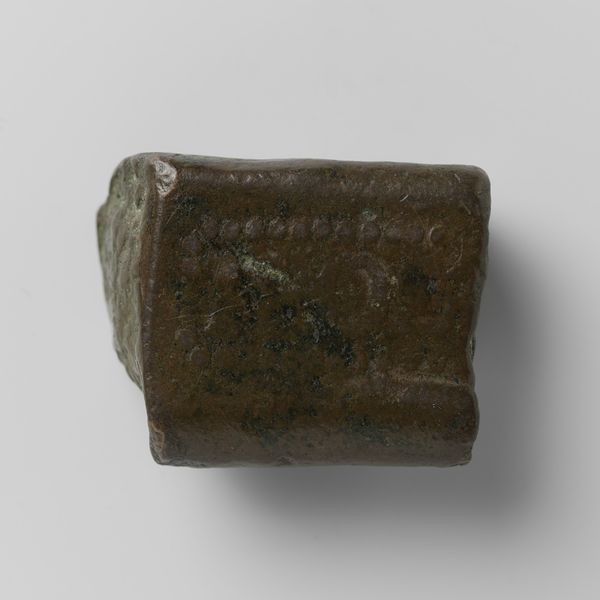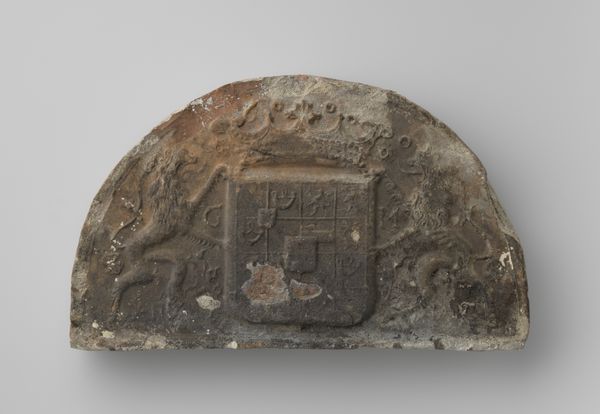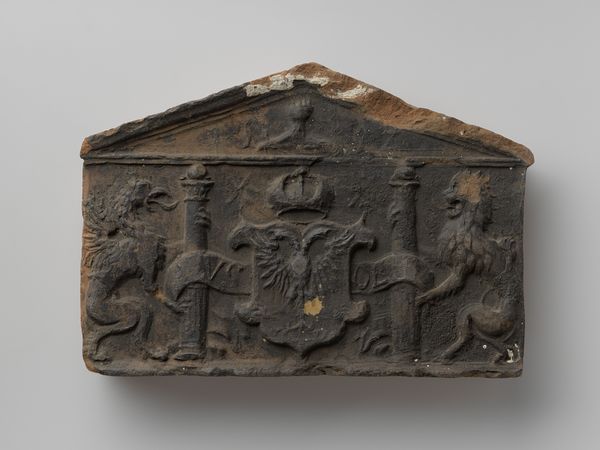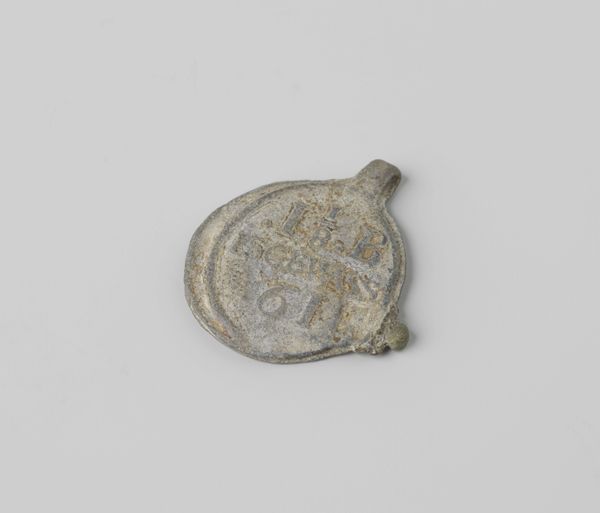
metal, bronze, sculpture
#
metal
#
sculpture
#
appropriation
#
bronze
#
ancient-mediterranean
#
sculpture
Dimensions: length 2.5 cm, width 2.2 cm, thickness 1.0 cm, weight 26.14 gr
Copyright: Rijks Museum: Open Domain
Curator: Immediately, the distorted rectangular shape strikes me. There's a blunt, almost brutal simplicity to its form. Editor: Indeed. We're looking at a bronze 'Bonk van 2 stuivers' from 1818, originating from Nederlands Indie, now part of the Rijksmuseum collection. It features the profile of Willem I, King of the Netherlands, though the featured side simply depicts the year. Curator: The fact that the year is so prominently featured directs our gaze right away. The texture, too, is rather coarse—not at all polished, and seemingly mass-produced, despite the individual deformations to the shape. Editor: The materiality is key. These 'bonks' weren't produced with the same care as traditionally minted coins. Instead, they are hastily made tokens. Imagine the conditions of labor under which these were produced in the colonies – forced or extremely cheap labor to extract the raw materials, then the rushed manufacturing process. It all speaks to the Dutch colonial project. Curator: Certainly, but let's return to its design. Semiotically, the inscription serves to both mark and control. This object seeks to embody authority and order but its rough form suggests an undercurrent of instability. It does the bare minimum to communicate the designated currency. Editor: Precisely. These “bonks” represent a specific type of economic violence. These mass-produced coins facilitated exploitation by streamlining economic activity that only profited colonizers. It underscores the imbalance of power, doesn't it? It is both money and a raw statement about colonial economics. Curator: Viewing it from this perspective allows us to see beyond the mere function. There's a deliberate aesthetic choice at play – even if born out of expedience - contributing to a brutalist expression of imperial power. Editor: Absolutely. Thinking about it in terms of material and labor offers us an alternative lens through which to understand this, ah, unusually shaped coin. Curator: Agreed, the piece provides such stark formal contrast that considering it now with this contextual awareness truly reshapes its viewing. Editor: It’s a chilling yet compelling testament to history and commodification under colonial rule, I must admit.
Comments
No comments
Be the first to comment and join the conversation on the ultimate creative platform.
